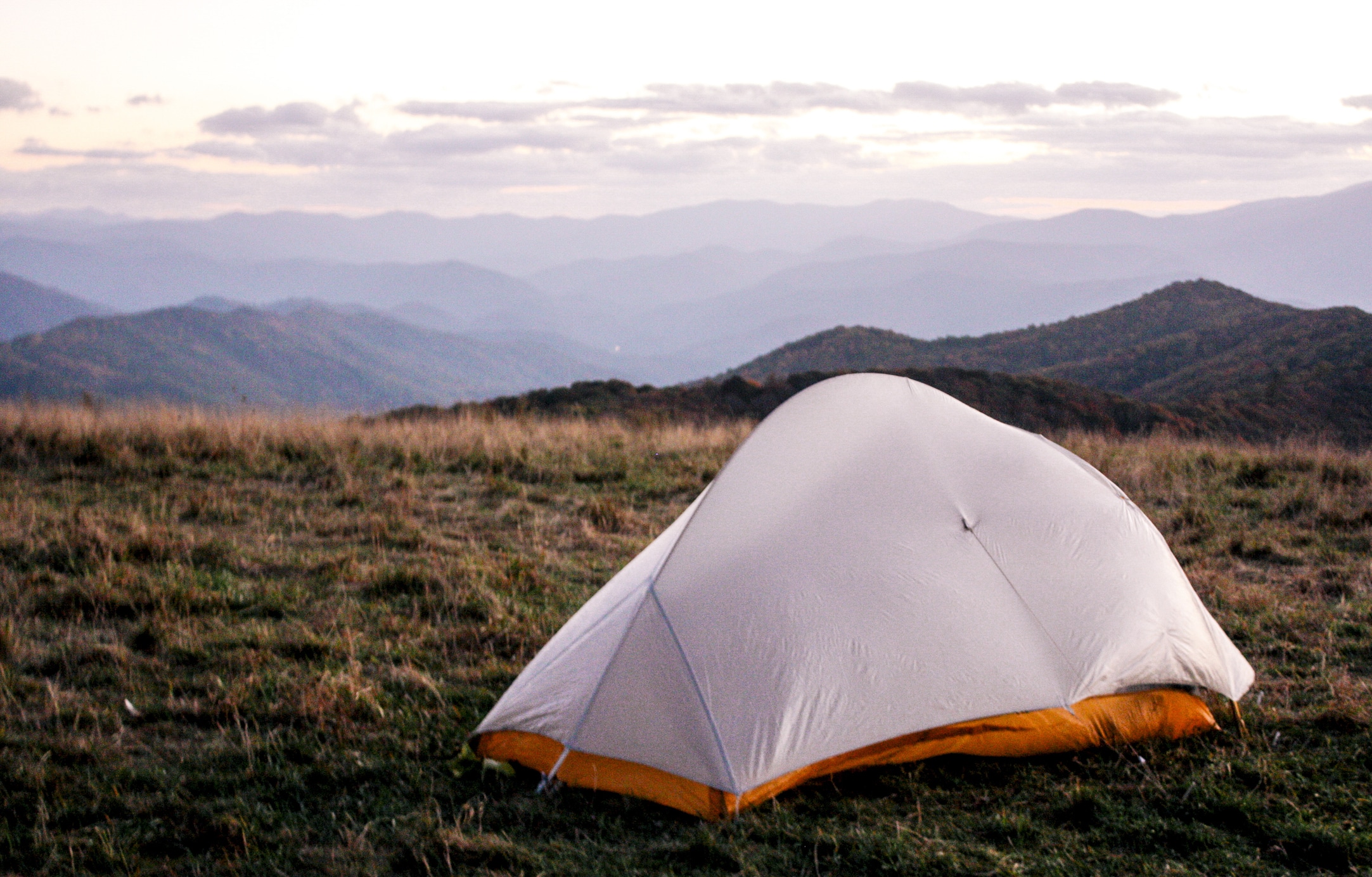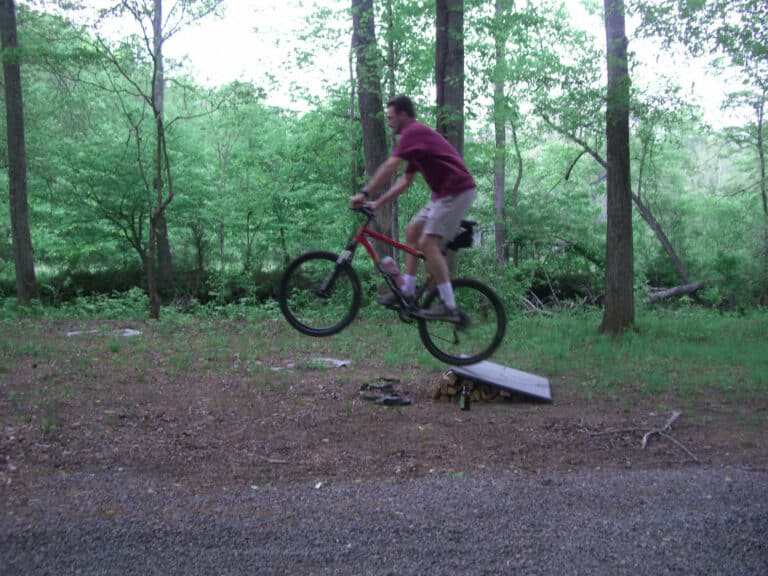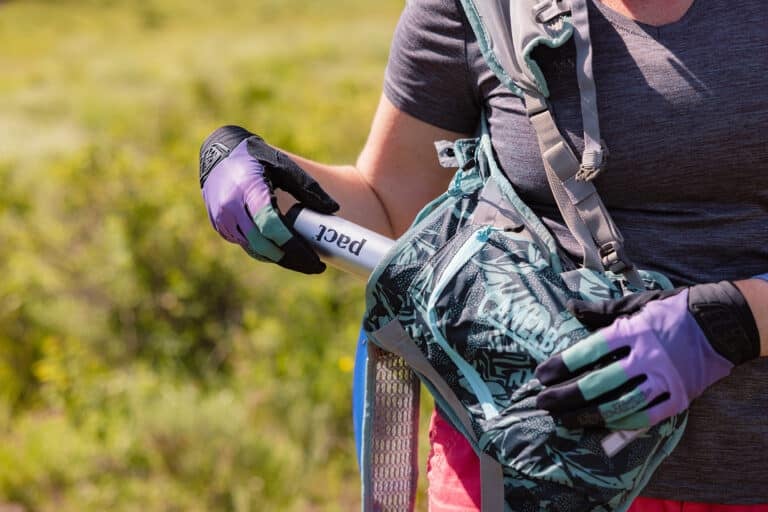A Forest Service Ranger Reveals Why
Some would say it was a long time coming. Yesterday it was announced that the Pisgah National Forest would implement a two-year camping ban on Max Patch, one of the most well-known grassy peaks along the Appalachian Trail (A.T.), located on the North Carolina- Tennessee border. The closure will be in place until June 30, 2023.
Over the years, Max Patch’s popularity with visitors has grown exponentially, and so has the impact on the land. According to the U.S. Forest Service (USFS), the closure is meant to minimize the impact on natural resources and protect public health and safety.
“We’ve been working with partners to achieve sustainable recreation at Max Patch because of the impacts due to a significant increase in visitors over the past decade,” said Appalachian District Ranger Jen Barnhart in a press release. “Unfortunately, the level of use is causing a public safety hazard as well as serious damage to wildlife habitat.”
According to the USFS, the new restrictions for Max Patch are currently in effect and include the following:
- No camping.
- No fires.
- Area closes 1 hour after sundown. Reopens 1 hour before sunrise. Visitors prohibited during closed hours.
- Group size limited to 10.
- Dogs and other animals must be on a leash no longer than 6 feet, or in a crate or cage.
- Stay on designated trails.
- Aircraft may not land nor drop off or pick up anything in this area. Drones are prohibited on Appalachian Trail.
- No fireworks.
- Bikes must stay on roads only.
- Horses and other saddle and pack animals may not be ridden, hitched, tethered, or hobbled in this area.
There has been much effort put towards protecting the area, including visitor education and the addition of barriers and fencing, but they have not been enough to address the challenges Max Patch has been facing. During the two year restriction period, visitor use and impacts will continue to be monitored and addressed by a group consisting of local partners, the USFS, and the local community.
We spoke with Jen Barnhart, District Ranger of the Appalachian Ranger District, about the implementation of the closure and the future of Max Patch.
BRO: What is your role at USFS, and what is your role in the implementation of this closure?
Barnhart: I’m the District Ranger on the Appalachian Ranger District. My role was to carry this process forward after it was started by the previous ranger. I’m working with partners and the public to figure out ways to manage visitor use in this area as the land manager. I also direct employees and oversee the management activities in this area that will help it recover. But I’m also a Forest Protection Officer and that means I can give visitors warnings and tickets if they violate the restrictions in the closure order.
BRO: Does the closure feel like a long time coming?
Barnhart: We don’t take actions like this lightly. There’s a process that we have to follow, with public input and substantial thought contributed by practitioners at all levels of our organization and partners, so it can take some time to work through all that. We take great pride in our work to be good hosts to people as they connect with the outdoors while also stewarding the natural and cultural resources of national forests. It’s a delicate balance.
BRO: What was the straw that broke the camel’s back and made this happen?
Barnhart: There’s no single straw but a lot of factors and issues that have been building. Overnight use has increased significantly in the past decade. It’s creating sanitation issues because people aren’t disposing of their waste properly and they are leaving long-term impacts with fire rings and campsites. Concerns and complaints about dogs off-leash creating a safety issue for people and other animals have grown with increased visitation. There’s limited parking at the trailhead and when it’s full people park on both shoulders of the state road blocking access for residents of the area as well as emergency vehicles. Public health and safety are high priorities for us.
BRO: What are the biggest takeaways you hope people gain from the closure?
Barnhart: Hopefully having the formal closure order lay out the restrictions will contribute to visitors becoming better informed about their impacts as well as caring more for their public lands. We strongly encourage people to visit www.recreateresponsibly.org and www.lnt.org for more information about how to enjoy the outdoors safely and sustainably. We are excited that more and more people are accessing the benefits of nature and are eager to partner with recreationalists and communities to find ways to equitably and sustainably provide for visitor enjoyment while ensuring future generations will have access to these experiences as well.
BRO: Are there measurable goals that come with this closure? Or is it more about giving the area a break from the excessive impact?
Barnhart: We expect to see some areas recover from camping and fire impacts as well as the user created trails that we’ve closed off becoming more naturalized, a reduction in human and dog waste and litter, and improved wildlife habitat.
BRO: Anything else you would like to share?
Barnhart: Ultimately, we want visitors to enjoy their public lands, while at the same time respecting them. We want people to adopt a value around land stewardship that will guide their behavior to care for the outdoor resources they enjoy. We hope the attention that comes to these issues helps us towards those goals. We are thankful for our volunteers, partners, and local community members who have invested their time and efforts in such an iconic location on the Appalachian National Scenic Trail. Shared stewardship of the public’s lands is a beautiful feeling. And we invite others to help us learn, adapt, and improve in our efforts.
Cover photo courtesy of Getty Images








